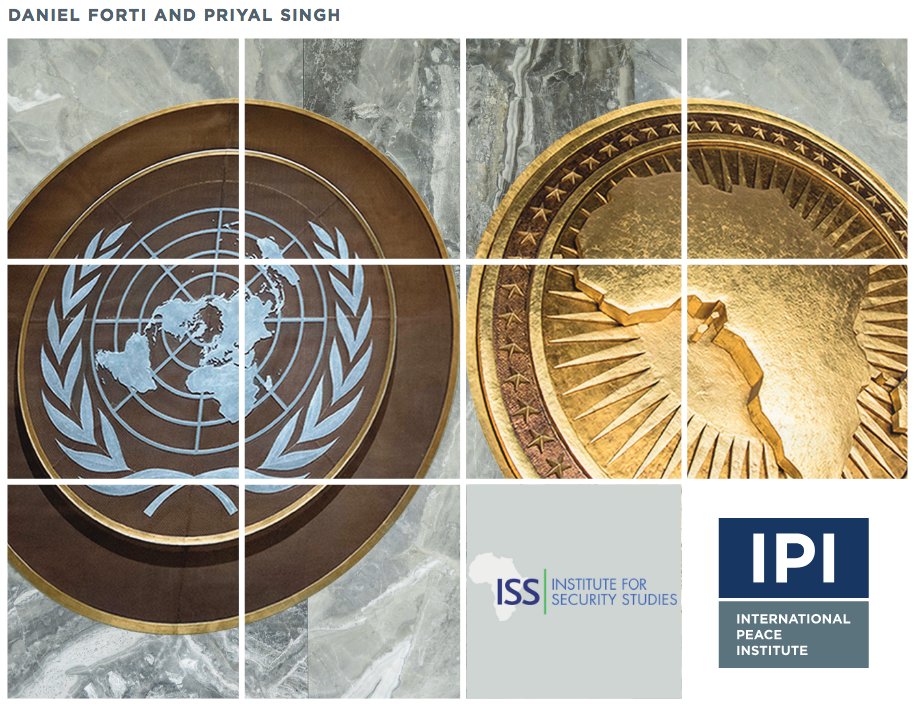Tomorrow, the UN Security Council and the AU Peace and Security Council begin their annual (virtual) session.
This is the fourteenth year where they meet to discuss peace and security issues on the continent.
A thread on how this session has evolved, and why it matters.
(1/x)
This is the fourteenth year where they meet to discuss peace and security issues on the continent.
A thread on how this session has evolved, and why it matters.
(1/x)
The AUPSC is the only regional member state body that meets the UNSC systematically. Their annual meetings began in 2007, but the idea for a Council-to-Council discussion can be traced back to UNSC discussions in 2002.
(2/x)
(2/x)
The annual meetings have evolved considerably. The first few meetings focused on process more than substance, with UNSC members anxious about unintentionally signaling that another member state body was its equal (and subverting its own primacy)
(3/x)
(3/x)
Once they settled into a mutual understanding, the next few meetings (2011-2015) featured jam-packed agendas, where the member states struggled to focus their attention on specific and tangible issues that required political or policy decisions
(4/x)
(4/x)
Since 2017, the UNSC and AUPSC have settled into a fairly productive groove. They separate the annual consultations into two days: the first focuses on a handful of thematic issues or working methods; the second focuses on country or region-specific discussions
(5/x)
(5/x)
The annual sessions (which rotate between NYC and Addis) are fairly well regarded. They help build relationships between diplomats, and create the space for forthright discussions on political situations that both bodies influence (but otherwise rarely coordinate on).
(6/x)
(6/x)
However, the sessions are not perfect. The overriding tension is that the two councils are increasingly interdependent, but remain locked in an unequal relationship in terms of powers, authorities, resources, and political status. This is a consistent undercurrent.
(7/x)
(7/x)
There& #39;s also a question about outcomes and impacts. Most years, the Councils agree on a Communiqué that summarizes the discussions. But in others (ie. 2017 and 2019) they struggle to adopt an agreed text. This is because some participants treat the text as a binding doc.
(8/x)
(8/x)
Also, there& #39;s virtually no follow-up to the outcomes over the rest of the year. Even when the UNSC or AUPSC refer to one another& #39;s decisions or press statements on specific files, the Communiqués are not referenced. So at best, they& #39;re historical docs.
(9/x)
(9/x)
Nonetheless, a closer UNSC-AUPSC dialogue is important and worth supporting. When working in concert, based on aligned political analyses and a common agreement on which tools to use (and when), they can exert valuable political influence.
(10/x)
(10/x)
And in this current multilateral environment, stronger cooperation between regions and institutions can build legitimacy and reinforce international solidarity, something that is too often in short supply when responding to political crises.
(11/x)
(11/x)
So, what& #39;s on the agenda for 2020? Discussions about #UN75, #SilencingtheGuns, Mali-Sahel, and Somalia.
For a summary from a NYC based perspective, see this good post by @SCRtweets
https://www.whatsinblue.org/2020/09/annual-meetings-with-the-au-peace-and-security-council.php
(12/x)">https://www.whatsinblue.org/2020/09/a...
For a summary from a NYC based perspective, see this good post by @SCRtweets
https://www.whatsinblue.org/2020/09/annual-meetings-with-the-au-peace-and-security-council.php
(12/x)">https://www.whatsinblue.org/2020/09/a...
And for a summary from an Addis-based perspective, see this equally good post by @africa_amani
http://www.amaniafrica-et.org/images/Reports/AnnualJointConsultativeMeetingPSCUNSC.pdf
(13/x)">https://www.amaniafrica-et.org/images/Re...
http://www.amaniafrica-et.org/images/Reports/AnnualJointConsultativeMeetingPSCUNSC.pdf
(13/x)">https://www.amaniafrica-et.org/images/Re...
And if you& #39;ve gotten this far and want a detailed analysis of the Council to Council relationship, see the report @priyal_singh and I published last year
https://www.ipinst.org/wp-content/uploads/2019/10/1910_UN-AU_Partnership-1.pdf
(14/x)">https://www.ipinst.org/wp-conten...
https://www.ipinst.org/wp-content/uploads/2019/10/1910_UN-AU_Partnership-1.pdf
(14/x)">https://www.ipinst.org/wp-conten...

 Read on Twitter
Read on Twitter


